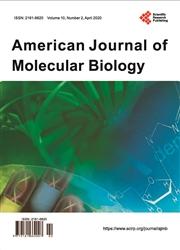Troponin T from the Japanese Pearl Oyster Pinctada fucata: Molecular Cloning, Tissue Distribution, Gene Structure, and Interaction Analysis with Tropomyosin
引用次数: 0
Abstract
Troponin (Tn) is composed of three subunits (TnI, TnC and TnT) that bind Ca2+ and regulate striated muscle contraction in vertebrates. TnT’s function has been extensively described in vertebrates, but its role has been obscure in molluscan muscles. Our previous work indicated that the TnC and TnI subunits work in adductor phasic muscle, but not in catch muscle. Here, we have characterized TnT from the Japanese bivalve pearl oyster Pinctada fucata to start to explain the function of Tn in molluscan muscle contraction. We determined the primary structure of the full-length TnT protein from the P. fucata adductor muscle (Pifuc-TnT), and found that it is composed of 316 amino acid residues with a predicted molecular mass of 37.4 kDa. Multiple sequence alignment showed that Pifuc-TnT has an extension of >60 residues at the C-terminus that are not present in vertebrate TnTs, including known TnTs from other mollusks. Pifuc-TnT gene structure predictions using Splign alignment of the cDNA generated in this study and genome sequences indicated that Pifuc-TnT consists of 13 exons. Start and stop codons are located in exons 2 and 12, respectively. Quantitative real-time PCR revealed that the Pifuc-TnT gene was predominantly expressed in adductor phasic muscle, weakly in adductor catch muscle, slightly in gill, and not at all in mantle and foot. These findings suggest that TnT plays a regulatory role in adductor phasic muscle contraction, but not in catch contraction. Isothermal titration calorimetry revealed that unlike vertebrate TnTs, Pifuc-TnT does not interact with P. fucata tropomyosin-1 nor with tropomyosin-2. These findings in P. fucata imply that Tn functions differently in molluscan muscle than it does in vertebrates.日本珍珠牡蛎的肌钙蛋白T:分子克隆、组织分布、基因结构及与原肌球蛋白的相互作用分析
肌钙蛋白(Tn)由三个亚基(TnI, TnC和TnT)组成,它们结合Ca2+并调节脊椎动物的横纹肌收缩。TnT的功能在脊椎动物中已被广泛描述,但其在软体动物肌肉中的作用尚不清楚。我们之前的工作表明TnC和TnI亚基在内收肌相肌中起作用,而在捕肌中不起作用。本文通过对日本双壳珍珠贝(Pinctada fucata)的三硝基甲苯(TnT)进行表征,开始解释三硝基甲苯在软体动物肌肉收缩中的作用。我们确定了P. fucata内收肌全长TnT蛋白(pifuct -TnT)的一级结构,发现它由316个氨基酸残基组成,预测分子量为37.4 kDa。多重序列比对表明,Pifuc-TnT在c端有bb60个残基的延伸,这在脊椎动物的tnt中是不存在的,包括来自其他软体动物的已知tnt。利用Splign比对本研究生成的cDNA和基因组序列进行Pifuc-TnT基因结构预测表明,Pifuc-TnT由13个外显子组成。起始密码子和终止密码子分别位于外显子2和12。实时荧光定量PCR结果显示,Pifuc-TnT基因主要在内收肌相肌中表达,在内收肌捕肌中表达较弱,在鳃中表达较少,而在地幔和足部中不表达。这些结果表明,TnT在内收肌的收缩中起调节作用,但在抓肌收缩中不起作用。等温滴定量热法显示,与脊椎动物的tnt不同,Pifuc-TnT不与富卡塔原肌球蛋白-1和原肌球蛋白-2相互作用。这些发现表明,Tn在软体动物肌肉中的作用不同于在脊椎动物肌肉中的作用。
本文章由计算机程序翻译,如有差异,请以英文原文为准。
求助全文
约1分钟内获得全文
求助全文

 求助内容:
求助内容: 应助结果提醒方式:
应助结果提醒方式:


